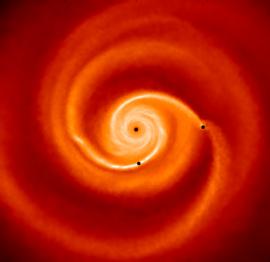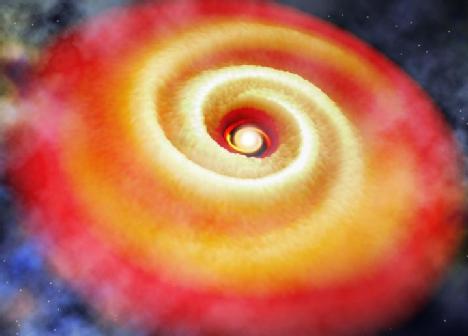Dr Farzana Meru, Dorothy Hodgkin Fellowship
The formation and evolution of planets
How did our Solar System planets form? Is there life elsewhere in the Universe? Or is our Solar System unique? These are some of the exciting questions that have puzzled and fascinated people for centuries.
The last decade has completely revolutionised what we know about planet formation. Planets form in protoplanetary discs, which are discs made of gas and dust that swirl around stars like our Sun.
Once upon a time our Sun would have had one of these discs, and our Solar System planets would have formed out of it.
In the last ten years powerful telescopes have taken images of these protoplanetary discs in unprecedented detail, giving us clues as to how planets form.
However, recent observational evidence suggests that planet formation may occur much earlier than previously thought, when the discs are young.
Dr Farzana Meru (Department of Physics) is undertaking an eight-year Research Fellowship in which she is using state-of-the-art computer simulations to understand how planets form in young discs.

Simulation image of a planet in the outer parts of a protoplanetary disc triggering another planet to form the interior to it.

An artist’s impression of a young protoplanetary disc with spirals. Credit: Institute of Astronomy — Amanda Smith & Farzana Meru.
Solving the planet formation puzzle
Astronomers try to understand how planets form by observing the night sky and developing theories to explain what they see. Planet formation takes millions of years but observers can only take instantaneous images of the process. The challenge is to use theoretical models to explain the observations.
Farzana's research uses sophisticated computer simulations along with what we know from observations to understand the whole planet formation process.
This theoretical research is of utmost importance as it fills in the missing pieces of the planet formation puzzle that observations are not able to capture – the combination of theory and observations then provides a full picture of how planets form.
A new era
We are living in exciting times where we are now seeing the most spectacular images of young discs in which planets might form. However we need to develop detailed theories to explain what observers are seeing, to answer some of the most fundamental questions in astronomy. Farzana's research does exactly this and will revolutionise what we know about planet formation and evolution.
